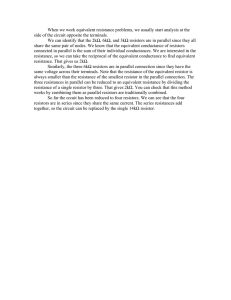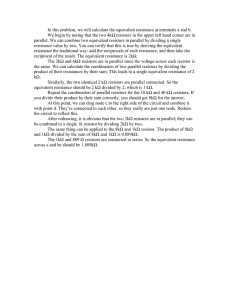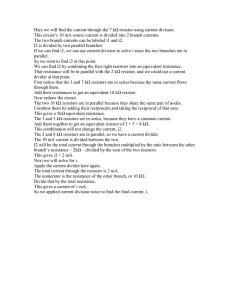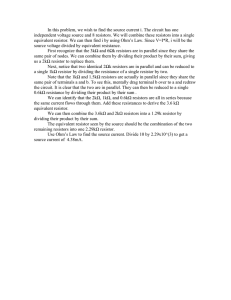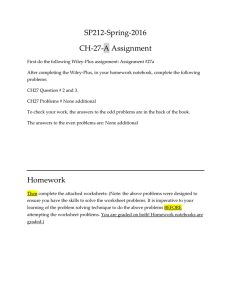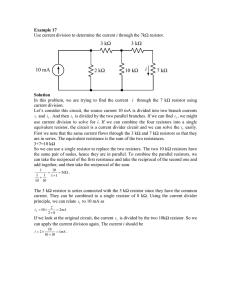In this problem, we are trying to find the equivalent... b. We often need to combine series or parallel resistors to...
advertisement
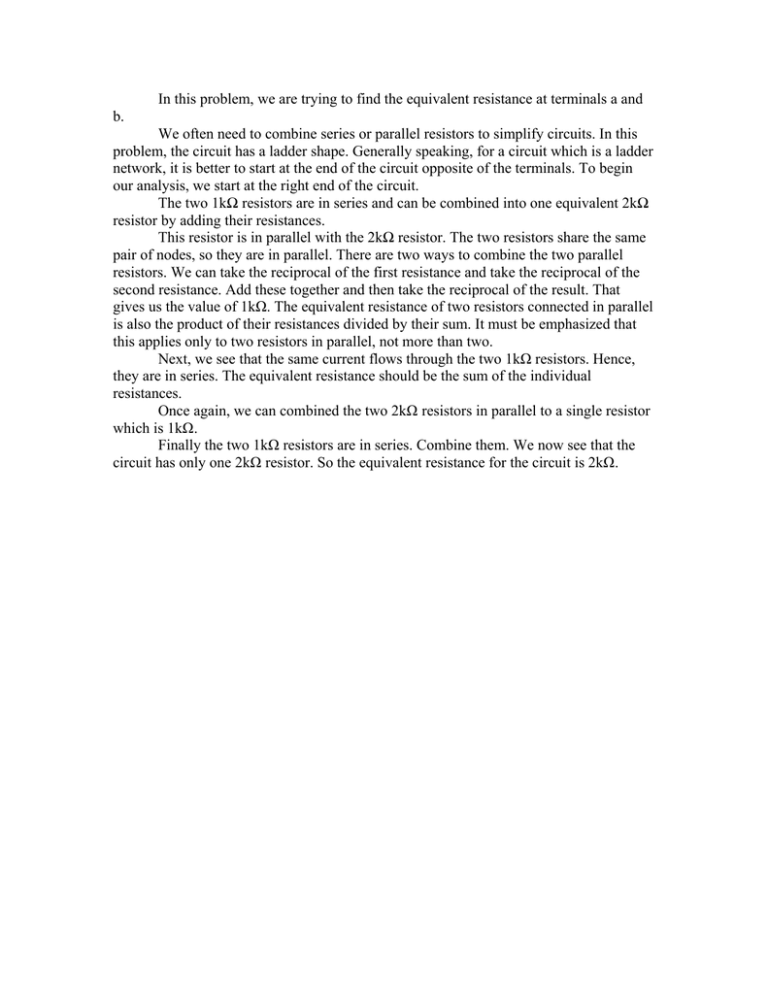
In this problem, we are trying to find the equivalent resistance at terminals a and b. We often need to combine series or parallel resistors to simplify circuits. In this problem, the circuit has a ladder shape. Generally speaking, for a circuit which is a ladder network, it is better to start at the end of the circuit opposite of the terminals. To begin our analysis, we start at the right end of the circuit. The two 1kΩ resistors are in series and can be combined into one equivalent 2kΩ resistor by adding their resistances. This resistor is in parallel with the 2kΩ resistor. The two resistors share the same pair of nodes, so they are in parallel. There are two ways to combine the two parallel resistors. We can take the reciprocal of the first resistance and take the reciprocal of the second resistance. Add these together and then take the reciprocal of the result. That gives us the value of 1kΩ. The equivalent resistance of two resistors connected in parallel is also the product of their resistances divided by their sum. It must be emphasized that this applies only to two resistors in parallel, not more than two. Next, we see that the same current flows through the two 1kΩ resistors. Hence, they are in series. The equivalent resistance should be the sum of the individual resistances. Once again, we can combined the two 2kΩ resistors in parallel to a single resistor which is 1kΩ. Finally the two 1kΩ resistors are in series. Combine them. We now see that the circuit has only one 2kΩ resistor. So the equivalent resistance for the circuit is 2kΩ.

